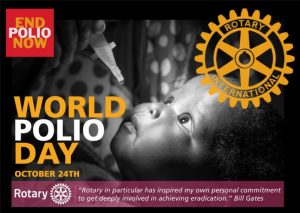20 JULY 2016 | GENEVA – Ahead of World Hepatitis Day, 28 July 2016, WHO is urging countries to take rapid action to improve knowledge about the disease, and to increase access to testing and treatment services. Today, only 1 in 20 people with viral hepatitis know they have it. And just 1 in 100 with the disease is being treated.
 « The world has ignored hepatitis at its peril,” said Dr Margaret Chan, WHO Director-General. “It is time to mobilize a global response to hepatitis on the scale similar to that generated to fight other communicable diseases like HIV/AIDS and tuberculosis.“ Around the world 400 million people are infected with hepatitis B and C, more than 10 times the number of people living with HIV. An estimated 1.45 million people died of the disease in 2013 – up from less than a million in 1990.
« The world has ignored hepatitis at its peril,” said Dr Margaret Chan, WHO Director-General. “It is time to mobilize a global response to hepatitis on the scale similar to that generated to fight other communicable diseases like HIV/AIDS and tuberculosis.“ Around the world 400 million people are infected with hepatitis B and C, more than 10 times the number of people living with HIV. An estimated 1.45 million people died of the disease in 2013 – up from less than a million in 1990.
In May 2016, at the World Health Assembly, 194 governments adopted the first-ever Global Health Sector Strategy on viral hepatitis and agreed to the first-ever global targets. The strategy includes a target to treat 8 million people for hepatitis B or C by 2020. The longer term aim is to reduce new viral hepatitis infections by 90% and to reduce the number of deaths due to viral hepatitis by 65% by 2030 from 2016 figures.
The strategy is ambitious, but the tools to achieve the targets are already in hand. An effective vaccine and treatment for hepatitis B exists. There is no vaccine for hepatitis C but there has been dramatic progress on treatment for the disease in the past few years. The introduction of oral medicines, called direct-acting antivirals, has made it possible to potentially cure more than 90% of patients within 2–3 months. But in many countries, current policies, regulations and medicine prices put the cure out of most people’s reach.
Source: Text & Image: WHO
 World Polio Day was established by Rotary International over a decade ago to commemorate the birth of Jonas Salk, who led the first team to develop a vaccine against poliomyelitis. Use of this inactivated polio virus vaccine and subsequent widespread use of the oral polio virus, developed by Albert Sabin, led to the establishment of the Global Polio Eradication Initiative (GPEI) in 1988. As of 2013, GPEI had reduced polio worldwide by 99%.
World Polio Day was established by Rotary International over a decade ago to commemorate the birth of Jonas Salk, who led the first team to develop a vaccine against poliomyelitis. Use of this inactivated polio virus vaccine and subsequent widespread use of the oral polio virus, developed by Albert Sabin, led to the establishment of the Global Polio Eradication Initiative (GPEI) in 1988. As of 2013, GPEI had reduced polio worldwide by 99%. In honor of World Polio Day, CDC will celebrate and highlight polio eradication work around the globe using Twitter and Facebook. Tweets will feature the efforts and photos of CDC staff deployed in the field who are working to end polio. CDC will also create a photo gallery on the Center for Global Health Facebook page to feature images of polio eradication work done by CDC and partners worldwide.
In honor of World Polio Day, CDC will celebrate and highlight polio eradication work around the globe using Twitter and Facebook. Tweets will feature the efforts and photos of CDC staff deployed in the field who are working to end polio. CDC will also create a photo gallery on the Center for Global Health Facebook page to feature images of polio eradication work done by CDC and partners worldwide. Pneumonia is a form of acute respiratory infection that affects the lungs, making breathing painful and limiting oxygen intake. Pneumonia is the biggest killer of children under age 5 worldwide. Nearly one in five global child deaths result from pneumonia every year. Moreover, this is a preventable and treatable illness via vaccines, antibiotic treatment, and improved sanitation. The United Nations (UN) first celebrated the day on November 12, 2009.
Pneumonia is a form of acute respiratory infection that affects the lungs, making breathing painful and limiting oxygen intake. Pneumonia is the biggest killer of children under age 5 worldwide. Nearly one in five global child deaths result from pneumonia every year. Moreover, this is a preventable and treatable illness via vaccines, antibiotic treatment, and improved sanitation. The United Nations (UN) first celebrated the day on November 12, 2009. « The world has ignored hepatitis at its peril,” said Dr Margaret Chan, WHO Director-General. “It is time to mobilize a global response to hepatitis on the scale similar to that generated to fight other communicable diseases like HIV/AIDS and tuberculosis.“ Around the world 400 million people are infected with hepatitis B and C, more than 10 times the number of people living with HIV. An
« The world has ignored hepatitis at its peril,” said Dr Margaret Chan, WHO Director-General. “It is time to mobilize a global response to hepatitis on the scale similar to that generated to fight other communicable diseases like HIV/AIDS and tuberculosis.“ Around the world 400 million people are infected with hepatitis B and C, more than 10 times the number of people living with HIV. An